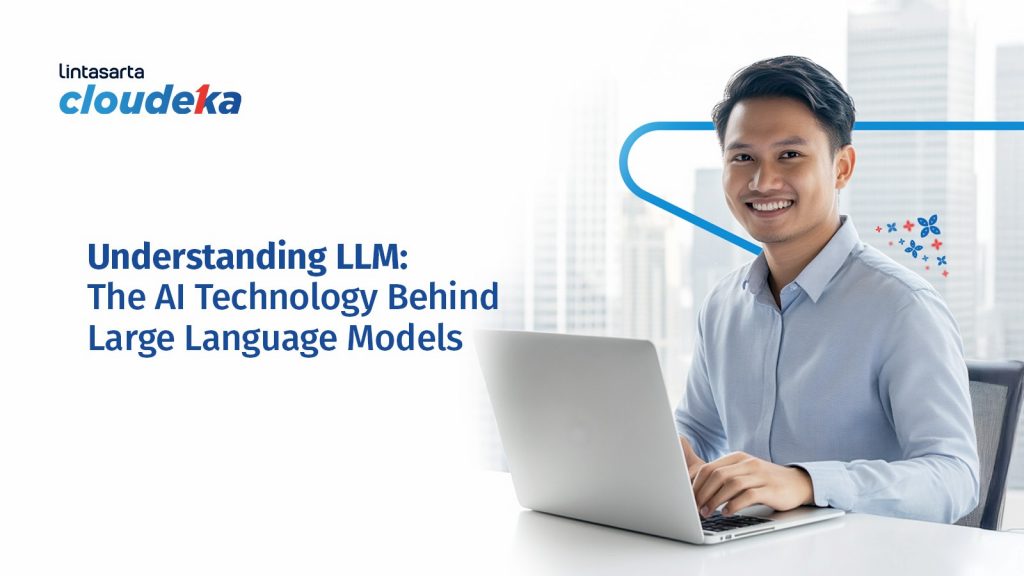As the digital era advances, Artificial Intelligence (AI) technology has rapidly evolved, bringing numerous innovations that benefit various industries. One of the most prominent AI advancements is Large Language Models (LLM). These models are designed to comprehend, generate, and process text in a way that closely mimics human understanding. With their capabilities, LLM have opened new opportunities across industries, from marketing to software development.
This article provides a comprehensive overview of LLM, including their workings, advantages, and applications across different sectors.
What is LLM?
Large Language Models (LLM) are deep learning-based AI models designed to understand and generate text in multiple languages with high accuracy. These models recognize context, meaning, and linguistic patterns, mimicking human language comprehension using billions of parameters processed through neural networks. As a result, they can generate coherent and contextually relevant text.
LLM operate by predicting the next word or phrase in a sentence based on learned patterns from extensive datasets, including books, articles, and websites. As AI technology progresses, LLM tailored for the Indonesian language have improved significantly, meeting the growing demand for AI solutions capable of understanding local languages.
Beyond text generation, LLM can be used for translation, answering questions, and sentiment analysis. Their sophisticated capabilities make them valuable tools in business, research, and technological development.
Some of the most well-known LLM include OpenAI’s GPT (Generative Pre-trained Transformer), widely utilized in chatbots, writing assistants, and even code generation. Other notable models include BERT (Bidirectional Encoder Representations from Transformers), designed for deep text comprehension. Additionally, several open-domain models, such as Meta’s Llama, Alibaba’s Qwen, and Deepseek, play crucial roles in modern AI applications, including virtual assistants, automatic translation, and advanced text analytics.
Also Read:Bagaimana Cara Kerja Artificial Intelligence (AI)?
How Do Large Language Models Work?

Machine learning and deep learning
LLM are built on machine learning, a branch of AI that enables programs to learn patterns from large datasets without direct human intervention. LLM employ a more advanced form of machine learning known as deep learning, which allows models to recognize complex distinctions and patterns.
Neural Networks in LLM
To support deep learning, LLM utilize artificial neural networks, mimicking the way the human brain processes information through interconnected neurons. These networks consist of input, output, and hidden layers, where information is processed only if it surpasses a certain threshold.
Transformer models: Inti dari LLM
LLM rely on transformer models, a specific type of neural network designed to understand context—a crucial element in human language. Transformers use a technique called self-attention, which identifies subtle relationships between elements in a sequence, making them superior to other machine learning methods in contextual understanding.
By leveraging self-attention, transformer models can grasp how the end of a sentence relates to its beginning or how one paragraph builds the context for another. This capability enables LLM to handle ambiguous, unstructured, or novel word combinations effectively.
Also Read: 6 Perbedaan Artificial Intelligence dan Machine Learning
Advantages of Large Language Models
1. Versatility

LLM can perform a wide range of tasks, from content creation and translation to programming. Their multifunctionality makes them a cost-effective and time-saving solution for businesses, meeting various operational needs efficiently.
2. Enhanced Natural Language Processing (NLP) Accuracy
In NLP tasks such as translation, sentiment analysis, and entity recognition, LLM deliver higher accuracy. Their ability to deeply understand language context results in precise outputs, making them ideal for applications requiring accurate text processing.
3. Multilingual Capabilities
LLM support multiple languages, including Indonesian, enabling businesses to reach global audiences. This multilingual capability helps companies serve international markets seamlessly while enhancing customer engagement with localized and easy-to-understand content.
4. Time and Cost Efficiency
Automating tasks like content writing, translation, and data analysis reduces operational costs and boosts efficiency. Manual tasks that previously consumed significant time can now be completed faster, allowing teams to focus on strategic initiatives. In real-time data-driven businesses, LLM process information at high speeds, supporting faster and more accurate decision-making.
5. Flexible Text Generation
LLM can generate not only coherent but also highly adaptable text. These models can be fine-tuned to create various content types, from technical articles and marketing copy to programming code, making them invaluable across multiple industries requiring automated content generation.
Also Read: Ini 6 Dampak Artificial Intelligence dalam Bisnis
Applications of Large Language Models Across Industries
Here are some examples of LLM applications involving information technology:
1. Automated Content Creation
LLM are widely used in automated content generation. With the ability to produce relevant and coherent text, media and marketing companies leverage LLM to create articles, blog posts, and copywriting. Models like GPT-3 enable large-scale content production with minimal human intervention.
2. Chatbot and Virtual Assistant

LLM power advanced chatbots and virtual assistants capable of understanding and responding to natural language queries accurately. These AI-driven assistants significantly enhance customer experience by providing relevant answers and interactive engagement.
3. Language Translation
LLM improve translation accuracy by preserving meaning and context, a longstanding challenge in machine translation. Some models even offer real-time voice translation, facilitating seamless multilingual communication.
4. Code Development and Programming
LLM assist developers by generating code snippets based on problem descriptions or specific functions, streamlining software development and accelerating the coding process.
5. Education and Learning
In education, LLM facilitate automated lesson creation, quizzes, and personalized tutoring. These AI-powered tools adapt to individual student needs, enhancing learning experiences.
6. Healthcare
In the medical field, LLM aid in analyzing medical data and generating automated reports. For instance, they assist doctors in writing medical notes or interpreting laboratory results more efficiently.
Also Read: Contoh Layanan Cloud Computing di Indonesia dan Tips Memilihnya
How Cloudeka Empowers Businesses with LLM?
Cloudeka offers LLM as a Service through Deka LLM, enabling businesses to access advanced AI capabilities without managing complex infrastructure. Deka LLM’s key advantage is Data Sovereignty, ensuring all data remains in Indonesia, secure, and compliant with local regulations. Additionally, the solution provides flexible and customizable integration through API-based access and retraining capabilities tailored to specific business needs.
To ensure optimal performance, Cloudeka grants access to NVIDIA’s fastest H100 GPUs, accelerating both training and inference processes for LLM. Deka LLM supports three powerful language models—Llama 3.3 70B, Qwen 2.5 72B, and Deepseek R1—designed for advanced AI computing needs. As an Indonesia-compatible solution, Deka LLM is optimized for processing Indonesian text with high accuracy.
From a cost perspective, Cloudeka adopts a pay-per-use model, allowing businesses to scale GPU resources as needed without significant upfront investment. Additionally, the service includes NVIDIA AI Enterprise, ensuring optimal AI development performance. With Deka LLM, businesses can leverage LLM technology to enhance productivity, drive innovation, and strengthen their competitive edge. Consult with Cloudeka today to explore how LLM as a Service can benefit your business!
